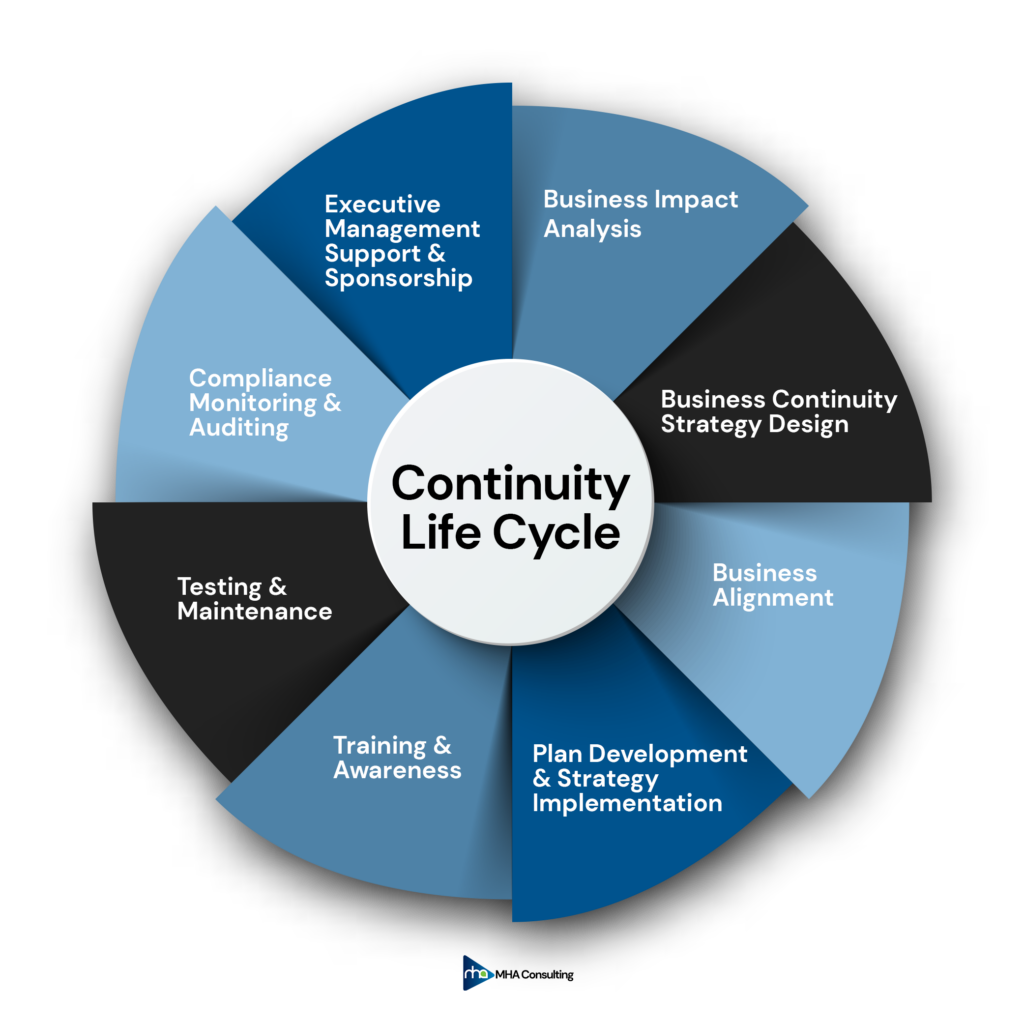Herrera Unplugged: How to Hamstring Your BC Consultant

Herrera Unplugged is an occasional series in which MHA Consulting CEO Michael Herrera shares his candid views on current hot-button business continuity topics.
You might think that a company spending a substantial sum for the advice of a business continuity consultant would do everything it could to make the collaboration a success. In fact, many organizations seem intent on making BC engagements fail, with one particular habit causing most of the trouble.
Related on MHA Consulting: Client’s Guide to Hiring a BC Consultant
True BC Believers
I have never been a “take the money and run” kind of business continuity consultant, and MHA is not the kind of firm. I guess you could say we are Boy Scouts, or nerds, or idealists; when it comes to business continuity, all three are true. We practice what we preach and believe in what we do.
We believe that it is important for organizations to develop the ability to carry on their essential operations in the event of disruptions. We care about seeing the value of organizations protected. We care about preventing the unnecessary harm to stakeholders and the society at large that can occur when unprepared organizations are hit by a disaster.
I mention this commitment to provide some background for the topic I want to discuss today.
It explains why I’m so invested in having our engagements with our clients succeed. We don’t just want to win the business and get paid. We want to help the organization get more competent at business continuity and become more resilient.
Our commitment also explains why I find the tendency I want to discuss today so unfortunate, and why I’d like to make a suggestion aimed at mitigating it.
Ignorance Is Not Bliss
The title of this post says it will tell you how to hamstring your business continuity consultant. Here’s how: Ensure that senior management knows absolutely nothing about business continuity. Keep them in a state of complete ignorance about why BC is important, what its purpose is, how it works, and why the company is spending good money on a consultant to help them get better at it.
Obviously, I’m being tongue in cheek. Having anyone intentionally make it harder for us to accomplish our objective is the last thing we want. You would think it would be the last thing the client would want as well.
In fact, management ignorance about BC is an issue we run into over and over again. It’s one that has the power to singlehandedly derail an entire BC engagement, squandering the company’s opportunity to become more resilient and causing their investment of hundreds of thousands of dollars, in some cases, to go down the drain.
How Management Ignorance Can Harm an Engagement
How does management’s lack of knowledge about BC undermine an engagement with a consultant? Mostly by allowing inertia to become an insurmountable force.
Management ignorance about BC goes hand in hand with not caring about it. This lack of care saps the employees’ motivation, lets the air out of the tires of the engagement, causes countless delays, and delegitimizes the work and requests for cooperation of the consultant and the BC office. No motivation, no urgency, and no cooperation means no progress. The investment gets wasted, the opportunity to improve is lost.
It’s no exaggeration to say that, when it comes to having a successful business continuity consulting engagement, management ignorance about BC is the kiss of death.
The Power of Education
The good news is, there’s a highly effective medicine available to treat this condition: education. One small dose can go a long way. It can be administered either by the client’s BC team or the consultant.
An effective presenter could get the key points across to the managers in half an hour using five slides or a two-page handout.
What are the key points that should be covered in such a briefing? The following would be a good start:
1. State clearly that the goal of the BC engagement is to help protect the organization, its employees, and its stakeholders against the impacts of a disaster.
2. Remind the managers that life is uncertain and the world currently more hazardous than ever thanks to the rise of cyberattacks, extreme weather, supply chain vulnerabilities, incidents of workplace violence, the heightened risk of reputational damage due to social media, global conflict, and similar threats.
3. Point out that when unprepared organizations are struck by an event or outage, the impact on their revenue and reputations can be severe.
4. Explain that experience shows that most organizations greatly overestimate their ability to improvise an effective response to a disaster.
5. Tell the managers that business continuity is a well-established discipline that uses a proven, recognized methodology to cushion the organization against negative events.
6. Point out that BC methodology has been codified by leading standards organizations such as the ISO and FFIEC and that its use is required at critical institutions such as banks and healthcare organizations as well as at top-tier government agencies such as the Defense Department.
7. State that the way BC achieves its goal is by systematically identifying the most mission-critical business processes and protecting them.
8. Explain that BC concerns itself with three main areas: protecting business processes, protecting IT processes, and crisis management.
9. Finally, explain and illustrate with a diagram the business continuity life cycle. This can be defined as “The ongoing process of assessing threats, prioritizing business processes, devising recovery strategies and plans, conducting training and mock disaster exercises, and identifying and closing gaps that is necessary to keep a business continuity program up-to-date and an organization resilient.”

Those are the basics. If they’ve followed you that far, you could go a little deeper and introduce such foundational BC concepts as BIAs, RTOs, risk mitigation strategies, the three types of threat (human, natural, and technological), and the four types of disruption (loss of facility or region, loss of human resources, loss of technology, and loss of supplier). But don’t try their patience. Sometimes less more, provided that the “less” covers what really matters.
As limited as the above information is, I guarantee you most of it will be new to most senior managers.
What’s more, it just might pique their interest, allay their skepticism, and win their support, a critical requirement if a BC consulting engagement is to succeed.
If you want to hamstring your BC consultant, it isn’t hard to do. All that’s required is to allow your senior management to remain in the dark about what BC is and why it’s important for the organization to become good at it.
If, on the other hand, you want the consultant to be effective and the engagement to succeed, ensure that provision is made early on for the top managers to receive a briefing, from either the BC team or the consultant, on the core purpose, credibility, and content of BC in general and the engagement in particular.
Overcoming Inertia and Improving Resilience
As strange as it seems, organizations routinely hire a BC consulting firm to improve their resilience, then undercut the engagement through a lack of cooperation. More often than not, the root cause lies in management’s total lack of knowledge of what business continuity is and what’s important.
Management ignorance fuels indifference on the part of everyone at the organization, allowing inertia to harden into concrete. The best way of avoiding this—and to ensure the engagement achieves its goal of improving the company’s resilience—is for the BC team or the consultant to spend a short period of time with senior management at the outset of the engagement spelling out in simple terms what BC is and why it’s worthwhile.
Further Reading
- A Little Help: How to Select a BCM Consultant
- Critical Assistance: How a Consultant Can Strengthen Your Crisis Management Program
- Getting the Most Out of Your BCM Consultant: Do’s and Don’ts
- Client’s Guide to Hiring a BC Consultant
- Dancing the Tango with Your Business Continuity Consultant
- Whitewash: When Clients Try to Get Their BCM Consultants to Conceal Their Problems









